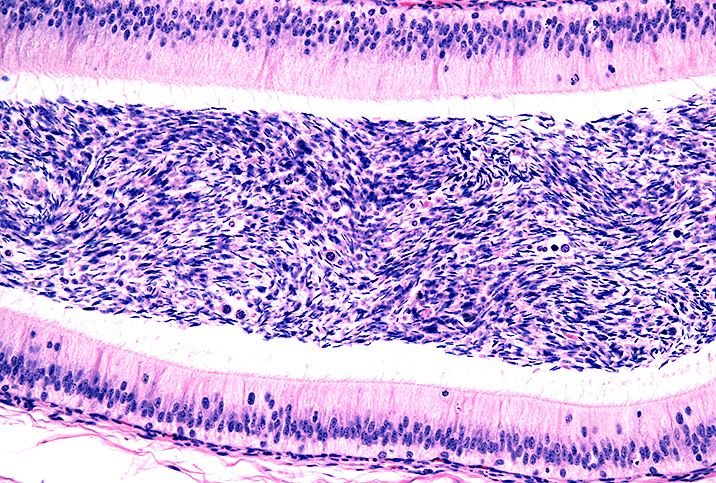Let's Explain Male Chronic Pelvic Pain Syndrome

You might associate pelvic pain with women. But men can suffer from chronic pelvic pain, too.
"Chronic pelvic pain in men and chronic prostatitis are terms often used to describe the same thing," said Hana Patel, M.B.B.S., a general practitioner and mental health coach in London. "The full, agreed title for both conditions is chronic pelvic pain syndrome [CPPS], which can affect both men and women."
It's difficult to say how common CPPS is in men because its prevalence ranges from 8.4 percent to 25 percent in studies worldwide. However, a 2015 study published in the Journal of Urology reported that prostatitis accounts for about 8 percent of visits to urologists, and more than 90 percent of men with symptomatic prostatitis are believed to have CPPS. So it's not an uncommon urological condition.
What is male chronic pelvic pain syndrome?
In a general sense, CPPS is a term for pelvic pain symptoms in men, which is sometimes also called nonbacterial prostatitis, according to Harris E. Foster Jr., M.D., a urologist in New Haven, Connecticut, and a professor of urology at Yale School of Medicine.
"It's really a diagnosis by exclusion, meaning you rule out things that can cause the pain," Foster said. "When everything is ruled out, you're left with chronic pelvic pain syndrome or nonbacterial prostatitis."
CPPS is similar to what people call interstitial cystitis in women, he added.
"So the long or short of it is that you have this constellation of symptoms, but there's no obvious cause," Foster concluded.
CPPS can significantly impact a patient's quality of life, and due to the unknown cause, it can present therapeutic challenges for physicians.
Typical symptoms of CPPS
Patel said most men with CPPS have feelings of pain in the penis, testicles, lower abdomen and groin over months or years, and the pain must be present for three months or more in the past six months for it to be diagnosed as CPPS. The symptoms must be present despite there not being a current infection.
Most commonly, the symptoms involve genital pain and include the following:
- Perineal pain (the perineum is the area between the genitals and anus)
- Lower abdominal pain
- Scrotal pain
- Penile pain
- Testicular pain
- Painful or uncomfortable ejaculation
"Men tend to present with pain in the pelvic region, often focused in the perineum, and it tends to be more central as opposed to lateral," Foster said.
How to diagnose CPPS
As Foster said, CPPS is a diagnosis of exclusion. Initially, your healthcare provider might have to run several tests to rule out other conditions. Those tests may include any of the following:
- Urine analysis to look for infection and bacteria (bacterial prostatitis requires different treatment)
- A physical examination
- Imaging studies, such as an ultrasound of the pelvis or computed tomography (CT) scan of the abdomen and pelvis
- Sexually transmitted infection (STI) and disease (STD) screenings for chlamydia, gonorrhea and others
- Urodynamic studies (if urinary symptoms are present)
"There is no specific test to diagnose CPPS," Foster said. "At the end of the day, you do all these tests, which are normal, and you are left with a patient who is symptomatic.
"Some people think it is an infection that we just can't detect. Others think it's a neuropathic [nerve pain] type of thing, and some believe it's a tension of the muscle around the prostate," he added.
How to treat CPPS
It can take a bit of trial and error to find the right treatment for CPPS, but physicians have several options. Antibiotics are an obvious choice. Your healthcare provider may prescribe an antibiotic such as Ciprofloxacin—from a group of antibiotics called fluoroquinolones—for four to six weeks. Foster said some people respond to antibiotics and see some improvement.
Alpha-adrenergic antagonists are a type of medication used to treat benign prostatic hyperplasia (BPH), or enlarged prostate. They relax the muscle tissue in blood vessels and the prostate gland.
Analgesics are pain relief medications that help some men. Skeletal muscle relaxants such as baclofen, tizanidine, dantrolene and diazepam are other pain relief options. They relax and reduce muscle tension.
Pelvic floor physical therapy may be prescribed. This treatment includes manual therapy techniques, exercises and lifestyle advice, with the goal of strengthening the pelvic floor muscles. Myofascial release is a specific type of physical therapy technique that focuses on releasing muscular shortness and tightness.
Some men respond to psychological therapies. Such treatment can help because some symptoms of CPPS can be worsened by stress, depression and anxiety.
Treatment might include a combination of methods such as medication, psychological therapy and physical therapy. Foster added that if symptoms aren't improving and pain is particularly bad, he would consider referring the patient to a pain management specialist.
Living with CPPS
CPPS tends to affect younger to middle-aged men, and the best treatment option remains uncertain. It's a chronic condition that can come and go over time and significantly affect a person's quality of life. CPPS can be frustrating, but sufferers have several treatment options they can explore with a healthcare provider. Many men find relief.
There is never a need to suffer in silence. CPPS isn't dangerous and is unrelated to infertility or cancer, but its symptoms can cause sexual and mental health complications.
Patel said the best thing anyone suffering from pelvic pain can do is to see a doctor or primary care provider and discuss their concerns. They can investigate whether there is an underlying cause and help manage the symptoms.
A physical examination is going to be necessary to get to the root of your pelvic pain. If you're more comfortable beginning the process with a telephone call or a video visit, a telehealth appointment is probably for you. Fortunately, more physicians are offering these services as part of their practice. Giddy telehealth makes it easy to get connected to a qualified healthcare professional, many of whom offer same-day appointments and affordable rates with no hidden fees.


















